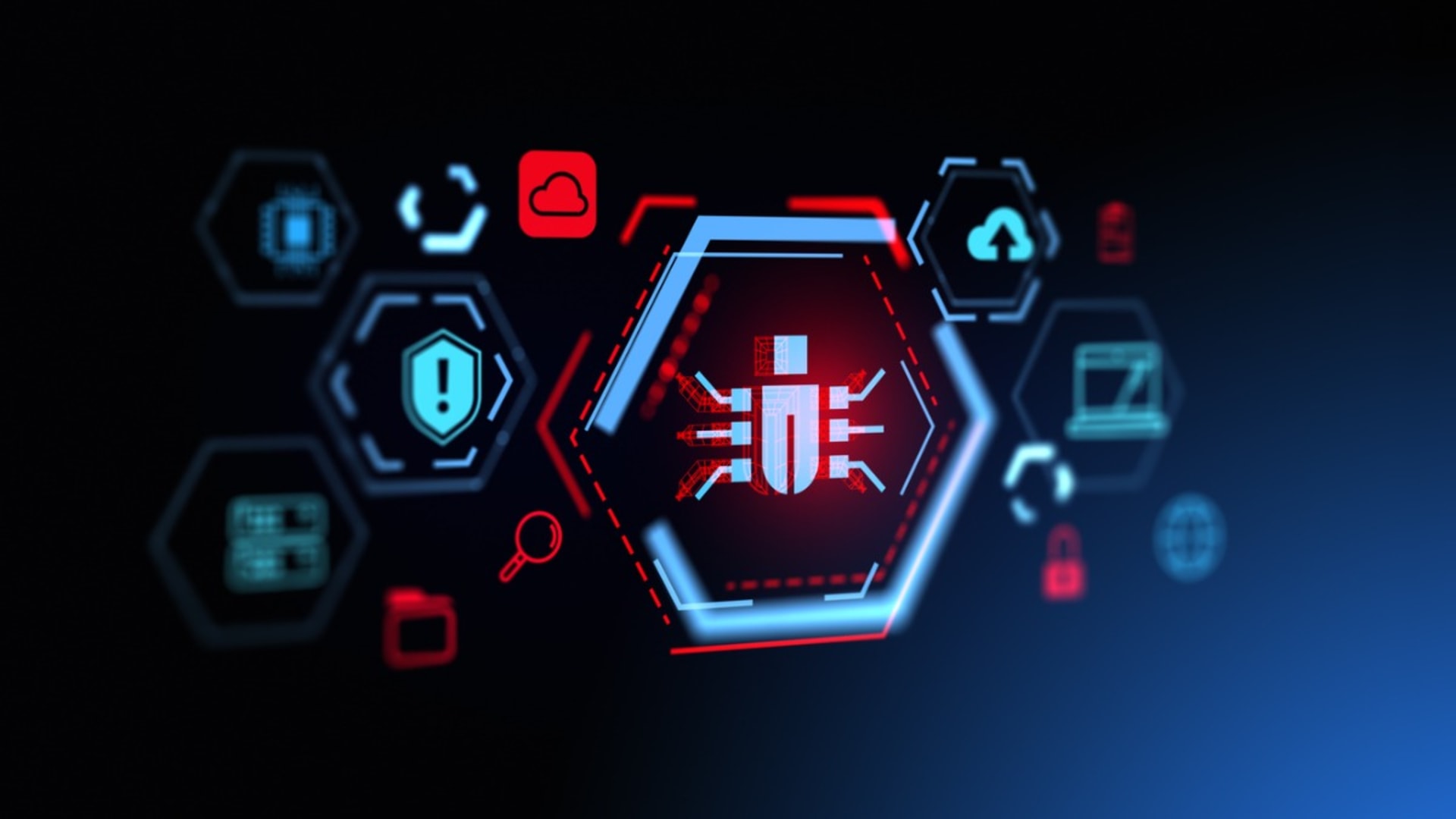Fresh eyes bring fresh perspectives. This holds true across fields, especially when it comes to designing user experiences. For software and web design, a UX designer’s biased viewpoints can significantly distort the software development process and adversely impact user experience.
Usability testing allows designers to learn directly from the people who use the software. Design and tech professionals often perform usability testing to solicit honest user feedback on their products or websites, which helps add meaningful dimensions to the development process.
Here, we’ll dive deep into the ins and outs of usability testing. You will learn the benefits of usability testing, how to conduct effective tests, how to determine the number of participants, the tools you’ll require, and the challenges involved in usability testing in software testing overall.
Historical Perspective of Usability Testing
The importance of usability first dawned on Vitruvius back in the first century BC. He put forth three systematic and elaborate design principles: 1) Firmitas (strength), 2) Utilitas (usefulness), and 3) Venustas (beauty).
From Vitruvius came the Vitruvian Man, a drawing created by Leonardo da Vinci sizing the human body while implementing one of the principles, “Utilitas.”
However, rigorous testing of products to achieve optimal usability started in the early 1980s. In 1981, American designer Alphonse Chapanis, a pioneer in product design, and his team realized the importance of observing about five to six users to discover the flaws in a product through usability tests.
It was in the late 1990s—the dot-com boom—that usability testing went mainstream. However, the debate about the ideal sample size for usability testing never ceased.
Even today, we haven’t been able to identify objective and reliable metrics to measure usability, although the methods of usability testing have only gotten more complex.
Why Usability Testing is Essential in Software Testing
Usability testing is essential in software testing because it pushes developers to validate their prototypes by bringing in potential users in the early stages of the product development process. It allows them to plan functionalities they want to add in the future, too.
Moreover, usability testing ensures that the complex product development process meets expectations—meaning everything works the way it was intended. This is made possible by users walking through various scenarios when using applications, confirming that the processes are intuitive and straightforward.
Most importantly, usability testing gives developers an opportunity to empathize with the user, allowing them to develop the most user-friendly software possible.
What’s the Difference Between User Testing and Usability Testing?
User testing or user experience/UX testing involves an in-depth evaluation of the broader customer experience and customer satisfaction with a product. The entire focus in user testing is on the end user’s needs, preferences, and challenges.
Usability testing, on the other hand, pays attention to a product’s ease of use, efficiency, and overall effectiveness in getting the job done. With usability testing systems in place, product developers can narrow down and fix issues related to navigation, layouts, and processes within the application.
Objectives
- User Testing undertakes the task of understanding users’ preferences, areas of enhancement, and the overall holistic relationship with the product. Here, the developers use a customer-centric approach to product development.
- Usability Testing takes on the objective of facilitating ease of use. To achieve that, developers focus on the interface and use the solicited feedback to address design flaws or user experience hindrances.
Outcomes
- User Testing helps achieve insights to boost product development effectiveness. Developers collect perception, emotion, and behavior-based feedback from potential users to strategically pursue product development.
- Usability Testing is conducted with the help of potential users taking specific actions. This generates actionable insights to help developers overcome usability challenges. With usability testing, developers can collect recommendations to make effective design adjustments.
Usability Testing Methods
Now that we’re well-acquainted with the idea of what usability testing stands for and its objectives, we can dive into the various testing methods. Let’s discuss some of the most common usability testing techniques.
Think-Aloud Protocol
The Think-Aloud Protocol method functions just like the name: participants verbalize their thoughts as they interact with the product. This usability testing method helps developers capture real-time reactions, thoughts, and decision-making processes.
Advantages
A real-time verbal insight gives developers direct insight into what the average user might think while using a certain functionality or when undertaking a scenario, which helps with the immediate identification of problematic areas in the application.
Challenges
One of the key challenges of conducting effective Think-Aloud Protocol usability testing is ensuring participants’ ability to comfortably turn their thoughts into words. Moreover, the testing method requires skilled moderators who can guide the process without influencing outcomes.
Remote Usability Testing
One of the most popular usability testing methods, remote usability testing, allows participants to access the product remotely from their locations via screen-sharing tools. Remote usability testing can be synchronous (real-time with a moderator) or asynchronous (users complete tasks at their own pace) and functions perfectly if developers are seeking geographically dispersed user bases.
Advantages
As mentioned earlier, remote usability testing allows a larger and more diverse participant pool. The method is less intimidating for participants and increases the probability of a more natural interaction.
Challenges
However, developers will have less control over the testing environment. The effectiveness of remote usability testing might be impeded by potential technical difficulties with software or connectivity.
In-Person Usability Testing
- Description: Participants interact with the product in a controlled environment, often observed directly by a moderator or research team.
- Facilitates immediate feedback and deeper exploration of user challenges.
- Ideal for complex or sensitive tasks where user context is crucial.
- Advantages:
- Direct observation of non-verbal cues and body language.
- Easier to clarify instructions or tasks.
- Challenges:
- More resource-intensive (requires suitable space and equipment).
- Potentially intimidating for participants.
In-person usability testing puts the participants in a controlled environment as they interact with the product. In-person usability testing is executed under a moderator or research team that closely monitors participants’ actions.
Advantage
In-person usability testing method solicits immediate feedback and is ideal for complex or sensitive tasks where user context is crucial. Moreover, it allows deeper exploration of potential user challenges. The method makes it easier for moderators to clarify instructions and ensure direct observation of non-verbal cues and body language.
Challenges
Such close monitoring by moderators can be quite intimidating for participants. The in-person usability testing requires equipment, adequate space, and environment—making the method more resource-intensive.
Guerrilla Usability Testing
Guerrilla usability testing involves conducting quick and informal tests in public places, such as restaurants, supermarkets, and salons, to quickly capture user feedback.
Advantages
The key advantage of using guerrilla usability testing is that it produces immediate reactions and feedback on specific elements without prior planning or recruitment of participants. It is cost-effective and fast and provides access to a broad spectrum of spontaneous participants.
Challenges
Guerrilla usability testing gives no control over constraints like environment or demographics and might even produce skewed feedback due to its impromptu nature.
Formative vs. Summative Testing
Formative Testing
Formative testing is generally conducted during product development to inform design decisions and make iterative improvements. It focuses on understanding potential user needs, behaviors, patterns, and challenges while producing continuous feedback loops for developers.
Advantages
It allows for early identification of usability problems and ensures the product is user-centric from the outset.
Challenges
Formative testing is known for requiring frequent iterations and even causing potential project delays if developers encounter major issues with the product.
Summative Testing
Summative testing is used for product validation or benchmarking and is ideally conducted once product development is complete. It allows developers to assess the overall usability and user satisfaction while comparing results against set usability objectives or competitors.
Advantages
Developers can easily set criteria or industry standards and map the product’s performance against them. It allows for a comprehensive evaluation of the final product.
Challenges
Since summative testing involves a comprehensive evaluation, it is less flexible for making changes and might even create potential challenges in addressing identified post-launch issues.
A/B Testing
A/B tests are quite simple and effective usability tests that comprise the rigorous testing of two versions of the same feature or interface. Users will interact with the two versions and provide feedback.
Advantages
This quantitative test involves KPIs, allowing developers to validate design choices while directly linking the usability changes to business metrics. Collecting such objective design performance data ensures effective continuous user interface optimization.
Challenges
A/B testing requires significant user traffic to reach a definitive conclusion. Moreover, the test validates one variable at a time. Thus, it potentially misses the impact of holistic UX challenges on product development.
Eye-Tracking Studies
Eye-tracking usability studies make the most of specialized equipment designed to track participants’ vision as they navigate through set tasks. The usability testing sorts areas on the interface based on their ability to garner attention.
Advantages
This usability testing method helps read patterns (F-patterns, Z-patterns, and more) while providing developers with objective visual attention data. The method plays a pivotal role in optimizing layout, establishing hierarchy, and designing visual elements.
Challenges
The specialized equipment involved in testing is expensive and requires much care. A massive challenge with conducting effective eye-tracking studies is ensuring an optimized interaction setup. Extraneous factors like bright colors can also distort testing results.
Task Analysis
Task analysis is an effective usability testing method that identifies bottlenecks and unnecessary steps in a process by breaking the process down into individual steps, making it easier and more efficient to evaluate performance.
Advantages
This usability test aims to streamline user workflows by providing developers with a detailed understanding of user paths and behavior. It also facilitates process optimizations for increased efficiency.
Challenges
It can be challenging to conduct task analysis since the test is quite time-consuming and requires domain expertise to ensure participants understand the complex tasks.
Steps in Conducting Usability Tests
What are the steps involved in a usability test? An effective test consists of four crucial steps: 1) Preparation, 2) Execution, 3) Analysis, and 4) Iteration. Here, we will discuss all four steps in detail.
#1 Preparation
It’s crucial to set a strong foundation for the usability test. Effective preparation involves the following tasks.
Define Objectives
Developers will first need to specify the purpose behind the test, which will make them consider several aspects of UX requiring evaluation. The initiative demands developers formulate clear and actionable research questions to guide the testing process.
Selecting Testing Methods
Of the usability testing methods mentioned above, which one is best for your purposes? Make a decision based on the qualitative and quantitative nature of testing and the desired outcomes. You may even want to consider the product stage, target audience, and specific objectives to choose a suitable usability testing method.
Participant Recruitment
Make sure you have clarity over the target user personas to achieve relevant and effective feedback. The test should be conducted on a diverse set of participants to solicit a wide range of UX feedback. The participants should be compensated for their time.
Designing the Tasks/Scenarios
Communicate the tasks and goals to the participants behind the test. More importantly, make sure the tasks are realistic, clear, and unbiased.
#2 Execution
Once preparation is complete, prepare for execution. Here are the steps and factors you should consider when executing usability tests.
Setup
The team will need to prepare an environment conducive to testing. This can be achieved by installing all the necessary tools and technologies and double-checking their functionalities by conducting dry runs or pilot tests.
Conducting the Test
For an effective test, make sure the participants are briefed about the tests and the context behind them. Participants should feel relaxed so they can focus on your instructions.
Developers can even ask participants to think out loud during the test to generate more insights into their thought processes. Regardless of their nature, keep monitoring and recording participants’ interactions with the interface during the test.
Feedback Collection
Post-test interviews help complement the actual test results. Follow up with the participants using questionnaires or surveys to solicit their experiences, perceptions, and suggestions.
#3 Analysis and Reporting
It’s time to analyze the results and collect crucial insights. Here’s how you can make the most of usability test analysis and deliver a quality usability testing report.
Data Synthesis
Begin by reviewing recordings, notes, and participants’ feedback to identify common patterns and outliers. The collected data should be analyzed using qualitative and quantitative data analysis methods such as coding user comments or calculating task success rates.
Drawing Conclusions
Upon complete data analysis, use the insights to understand the implications of test results in the context of set software objectives. We suggest you prioritize usability issues based on frequency, severity, and business impact.
Recommendation & Action Plans
Use the insights to recommend specific design or functionality changes that address identified usability issues in the product. Plan a strategic implementation by ensuring effective collaboration with designers, developers, and stakeholders.
Feedback Loop
Close the feedback loop by communicating the test results and recommendations to the participants. This helps instill trust in them and keeps them motivated for future participation.
#4 Iteration
Finally, the insights and conclusions will be implemented, and developers will accordingly adjust the product’s design. Here’s what this step involves.
Implementation of Changes
Successful implementation of the suggested changes is key to result-oriented usability testing. Ensure a successful implementation by working together with the development and design teams.
Re-testing
The “set it and forget it” approach to product development doesn’t work in such a fiercely competitive market. Keep pushing toward excellence by conducting a follow-up test to gauge the effectiveness of the modifications. Periodically conduct more tests, collect feedback, and refine the product to improve its usability.
How Many Participants & Researchers Do You Need for Testing?
Participants and researchers form a significant part of the usability testing team. How can you ensure the right number of people on the team? Here’s how:
Participants
Rule of Thumb
When it comes to determining the number of participants for the usability test, we often cite the “magic number five.” The term was coined in research by Jakob Nielsen, which suggested that about 85% of usability problems can be identified with just five participants. We can add more participants to the test. But it will only make the test more expensive and time-consuming, and will not provide any additional insight.
Considerations
Developers should consider complexity and budget/time while determining the number of participants required for the test. For products that are multifaceted or have diverse user personas, you can consider segmenting the participants and ensuring that there are five participants per segment. Although the “magic number five” is optimal, developers may even test with 1-3 participants to receive valuable feedback.
Researchers
Single Moderator Approach
The single moderator approach to usability testing involves one researcher who will manage the test session, guide the participant, and take notes. The approach allows for faster decision-making and streamlined communication.
Team-Based Approach
The team-based approach to usability testing includes a main moderator who will manage the test session and one or more observers who will take notes. The benefits of a team-based approach are quite astounding because the method embraces diverse perspectives and ensures richer data collection. A team environment allows for shared responsibilities, which improves productivity and efficiency.
Usability Test Challenges
Usability tests can be quite effective in enhancing the product development process and ensuring improved UX. But it can sometimes be complex and chaotic. Usability testing comes with a long list of challenges that you’ll need to consider and overcome. Here are some of the common challenges and solutions:
#1 Recruiting ideal participants
How do you get the right user sample for testing? The effectiveness of any usability testing strategy hinges on the quality of participants. Usability testing conducted even on a random grouping of users will provide insights.
But how impactful will the insights be? Recruiting ideal participants is a major challenge that can be overcome by providing clarity over the type of users required in the test session. Before doing that, you should define the right user sample too.
#2 Organizational buy-in
Product developers might have a hard time ensuring that all key stakeholders and decision-makers are on the same page. It’s essential to attain buy-in from the entire organization—otherwise, the results of the usability testing efforts could fall on deaf ears.
It’s an uphill battle for developers working in a company where usability testing is considered a luxury.
The best way to overcome this challenge is to include stakeholders in the communication from the word go. Set clear research objectives and make some of the stakeholders a part of your usability testing team.
#3 Setting clear objectives
Establishing objectives can be a challenge, too. You need to set clear goals and milestones to derive maximum value from the testing sessions.
An objective that hasn’t been well thought out could send the entire testing team on the wrong path. This might begin with posing the wrong questions to the wrong set of participants and soliciting meaningless feedback.
To overcome this challenge, you’ll need to know precisely what you are trying to achieve through usability testing. You should have a list of issues to address. Then, prioritize them, considering how they complement your larger organizational goals. Most importantly, choose objectives that you can realistically achieve and implement.
#4 Realistic testing environment
Creating a realistic testing environment can be time-consuming and requires strong attention to detail. Ideally, usability testing should be performed in a dedicated testing environment.
External factors like noise, temperature, interruptions, and more can impact testing. The only solution to overcome this challenge is rigorous preparation. Developers should perform a trial setup well in advance to confirm that it’s an ideal testing environment.
Usability Testing Tools and Technologies
Of course, a usability testing environment needs to have the right tools and technologies to ensure seamless test execution. Let’s explore the best tools to use.
Screen Recording & Session Replay
Screen recording and session replay applications help capture real-time user interactions that are easily accessible for review later in the usability testing process. Some examples of these types of applications are Lookback and Hotjar.
Advantages: These applications provide insight into user behaviors and navigational patterns to help identify points that lead to confusion or app abandonment. Tools like Hotjar even offer heatmaps to help users to make more informed conclusions.
Heatmaps
Heatmap applications are designed to track user activity on a webpage or software. With heatmaps, developers can easily visualize how users interact with the software. They can monitor where they click, move, or scroll. Some examples of heatmap applications are Crazy Egg and Mouseflow.
Advantages: These applications make it convenient for developers to quickly identify popular or ignored areas and strategically optimize page layouts and call-to-action placements.
Remote Testing Platforms
Remote testing is one of the most common forms of usability testing. It involves tests conducted with users from different geographic locations. Some excellent examples of remote testing platforms are UserZoom and UserTesting. These are comprehensive platforms that connect businesses with target consumers over remote sessions.
Advantages: These remote testing platforms provide access to a diverse and broad participant pool. They also provide flexibility in scheduling and conducting tests.
Survey & Feedback Tools
Soliciting feedback is a pivotal part of the usability testing process. With survey and feedback tools like SurveyMonkey and Qualtrics, developers can gather quantitative and qualitative feedback directly from users. These advanced survey tools help create customizable surveys and come loaded with analytical capabilities.
Advantages: When these tools are strategically used, the benefits of survey and feedback tools include their ability to collect structured feedback for easy analysis and engage users at scale.
A/B Testing Platforms
A/B testing platforms facilitate easy qualitative and quantitative comparisons of two versions of a page or feature, helping developers determine the best option. Applications like Optimizely and VWO (Visual Website Optimizer) enable A/B and multivariate testing to optimize the user experience.
Advantages: With adequate user traffic to work with, A/B testing platforms can contribute to making data-informed design decisions and validating hypotheses on user preferences.
Eye Tracking Technology
Earlier, we discussed how eye-tracking studies can function as a reliable usability testing method. Eye-tracking devices and solutions for UX and marketing research by companies like Tobii and EyeTech help monitor participants’ visual movements and track attention patterns during usability tests.
Advantages: Eye-tracking tools make it easier for developers to unearth subconscious user behaviors and fine-tune visual hierarchies and content placement.
Accessibility Testing Tools
The American Disability Act (ADA) encourages software companies to ensure that users with disabilities have equal access to the same programs as those without disabilities do. Accessibility testing tools like WAVE and aXe (browser extension) help developers evaluate the product’s accessibility.
Advantages: Accessibility testing tools promote inclusivity in design and make it easier for companies to maintain compliance.
Future of Usability Testing
Usability testing is essential for businesses. It allows them to stay relevant in a competitive landscape. It’s also critical to keep pace with changing usability trends. The field has evolved significantly with the implementation of emerging trends and technologies—ensuring products resonate with potential users on a profound level.
Mobile usability
Companies are increasingly investing in mobile usability testing to ensure that they thrive in the digital landscape. They conduct mobile platform-specific usability tests that entail capturing real-time interactions, mobile user behaviors, and other factors like screen sizes, device performance, gestures, and more.
Biometric data and emotion analysis
Aside from eye-tracking usability tests, software companies have adopted biometric data and emotion testing and analysis using techniques like heart rate monitoring, galvanic skin response, facial expression analysis, and more to measure users’ level of satisfaction with the product.
VR and AR testing
As virtual and augmented reality technologies transform industries, web development companies are finding ways to simulate realistic and immersive UX to identify potential usability issues.
Automated usability testing
With automation, developers will be able to test for usability using tools that automatically generate test scenarios. These technologically advanced tools, coupled with human insights, can help catalyze the testing process, reduce errors, and ensure data-driven product enhancements.
AI-powered testing
Artificial intelligence and machine learning algorithms make it easier for developers to process large amounts of usability testing data. AI-powered testing solutions are powerful enough to expedite data collection, identify patterns, and suggest insights. These enable faster iterations and efficient product enhancements.
Conclusion
Usability testing is an investment that allows companies to make data-driven adjustments that eventually help them stand out from the competition. It is an extensive and user-centric testing process that provides a higher level of understanding of how a typical user interacts with software products.
Usability testing is by far one of the most effective approaches to enhance a product’s usability, consistency, performance, accessibility, and other crucial characteristics. Developers should double down on usability testing from the get-go to deliver an exceptional user experience.
FAQ
How does a usability test benefit software developers?
A usability test provides developers with insights into user behavior and patterns as an ideal focus group—generally with five participants—interacts with an application. It allows for the early detection of issues and consistent data-driven product quality enhancements. In other words, usability testing takes guesswork out of the equation and helps developers take concrete actions during the software development cycle.
How often should a usability test be conducted?
Usability testing is not a one-off. Iterative testing is a crucial part of the software lifecycle since user behavior and preferences change with time. Iterative testing allows developers to enhance their products and gain a competitive edge.
Can usability tests be done remotely?
Yes, usability tests can be conducted remotely using remote testing platforms. Since the recent pandemic, companies have been more inclined toward remote usability testing. Although it gives no control over the testing environment, remote testing can help bring in a larger and more diverse participant pool.







